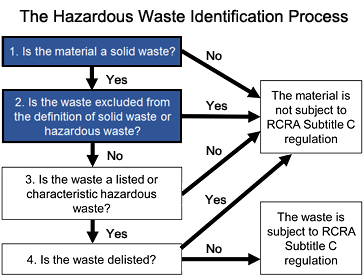The 6-Second Trick For Reclaim Waste
Table of ContentsNot known Details About Reclaim Waste What Does Reclaim Waste Mean?The Ultimate Guide To Reclaim WasteThe Best Guide To Reclaim WasteNot known Facts About Reclaim WasteSome Known Details About Reclaim Waste
If your service produces any sort of waste, you're currently knowledgeable about the daily obstacles of managing it - liquid waste disposal. However did you know that there are best methods for waste management? In this article, we'll discover several of the very best ways to keep your service's general and fluid waste under controlReview on and learn just how to handle your service waste in the most efficient way possible! Recycling is one of the most effective methods to reduce the quantity of waste your organization creates. By setting up a recycling program, you'll not only conserve money but help maintain important materials out of landfills.
Composting can aid reduce the quantity of waste you send out to the land fill, while additionally creating a nutrient-rich soil modification that you can make use of in your gardens or lawns. Instead of throwing away fluid non-hazardous waste, centers can make the most of the chance to create fertilizer. After removing the water from the waste, there will certainly be organic matter consisting of vital nutrients such as nitrogen, potassium and sodium.
This can be done through simple steps such as lowering the quantity of product packaging made use of in items or switching over to reusable containers as opposed to non reusable ones. Incineration is commonly utilized as a method of contaminated materials disposal, yet it ought to be employed very carefully. The procedure involves specialized heaters that incinerate acids, chemicals, oils and various other waste issue; the warm leaves just water behind.
Getting The Reclaim Waste To Work
Incinerators are costly to develop, maintain and operatemaking them a troublesome remedy for many centers. Along with recycling and composting, there are various other methods for reducing the amount of waste your business creates. Practices such as and like paper, cardboard boxes, and plastic containers can considerably minimize the amount of waste your company produces.
The staying choice is to dispose of the liquid waste as-is, a lot of the moment with help from a professional disposal team. The center collects its liquid squander into appropriate drums and after that sends it off; the waste monitoring company moves it away for ideal elimination based upon nationwide and state guidelines.
Proper disposal is essential to effective waste management. Ensure everything you throw away is effectively arranged and dealt with according to regional guidelines. If you don't have the time or sources to manage your organization's waste, working with a professional waste monitoring firm can be an excellent way to make certain that it's done.
The Of Reclaim Waste
You can guarantee that your business is doing its part to protect the setting and save sources. With our aid, any service can become extra lasting and reduce its ecological effect. Get in touch with us today for more information regarding exactly how we can help you handle your company's waste in the most efficient and effective means feasible.

Do you keep in mind the meaning of hygiene made use of in Research Session 1? Cleanliness was defined as the avoidance of contact between humans and waste.
The Ultimate Guide To Reclaim Waste
Sanitation approaches aim to lower the spread of illness by guaranteeing that wastewater, excreta and various other wastes are appropriately dealt with. This session will certainly assist you to reply to the hygiene demands of households and establishments. When you have actually studied this session, you should have the ability to:19.1 Define and appropriately utilize the keywords published in vibrant.
(https://www.bitchute.com/channel/CMMIY2RhhHfK)(SAQ 19.1)19.3 Explain some various methods of fluid garbage disposal. (SAQ 19.1)19.4 Identify problems to be considered when picking sanitation technologies. (SAQ 19.2) In Study Session 18 you found out that liquid waste includes human waste, sullage, industrial waste and runoff (additionally referred as storm water or flooding water). What is the distinction in between sewer and sullage? Sewage consists of human wastes (i.e.
The 7-Minute Rule for Reclaim Waste
Sullage is the wastewater that emerges from residential tasks such as washing in look what i found bathrooms and kitchen areas, consisting of water from cooking and dishwashing; it does not contain human excreta. Human waste and sullage can emerge from public organizations such as institutions, along with from private families. Hazardous waste arises from various markets as an outcome of processes to generate products and services.
Rumored Buzz on Reclaim Waste
Industrial waste might be harmful and hence dangerous in nature, or it might contain non-hazardous materials. Unlike the other types of fluid waste, some industrial wastes might need unique therapy before discharge from the market. Overflow is simply flooding water that occurs from rainfall or the release of collected water from a pond or dam.
It is potentially dangerous to the wellness of the community. Liquid waste is likewise generated in health care facilities yet this will be handled thoroughly in Research study Session 23. Monitoring of liquid waste concentrates on discovering a method to dispose of the waste in a manner that is secure for humans and the setting.

The technique made use of ought to be easy and inexpensive in construction and operation. The technique ought to last for at the very least five years to be cost-efficient. In Research Session 18 you were presented to some of the hygiene technologies that are made use of for human waste administration. You may recall that WCs and pour-flush facilities were classed as wet or water carriage systems, additionally called drop-flush-and-discharge systems.